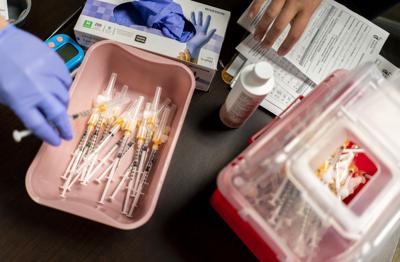Researchers at the University of Missouri have unveiled a groundbreaking technology that enables the non-invasive measurement of blood viscosity in real time. This innovation addresses a significant gap in medical monitoring, as blood viscosity—essentially the thickness and stickiness of blood—has been historically overlooked despite its connection to major health issues.
The findings, published in the Journal of Dynamic Systems, Measurement, and Control in March 2025, highlight the importance of blood viscosity in relation to six of the ten leading causes of death in the United States, including heart disease, cancer, and stroke. According to Nilesh Salvi, a research scientist in the College of Agriculture, Food and Natural Resources and the lead author of the study, thick blood can increase the risk of clots and force the heart to exert more effort.
Innovative Technology Behind the Measurement
The newly developed device utilizes ultrasound waves to assess blood viscosity in real time. The innovation stems not only from the ultrasound technology itself but also from sophisticated software that interprets the data. The system works by sending continuous sound waves through the blood, which generates vibrations that are then analyzed by a powerful algorithm.
This approach allows for simultaneous measurements of both blood density and viscosity, a significant advancement in medical diagnostics. Salvi explains, “Blood pressure provides information about vessel walls, but it does not convey details about the blood itself. Viscosity could be that missing piece.”
Interestingly, the device was originally conceived for monitoring oil quality in engines. Salvi, who earned his master’s degree and Ph.D. at the university’s College of Engineering, initially focused on developing sensors for real-time monitoring of engine lubricants. Under the mentorship of Jinglu Tan, a professor of chemical and biomedical engineering, Salvi pivoted towards the biomedical applications of the technology.
Potential Impact on Patient Care
One of the foremost advocates for exploring the medical implications of this technology was William Fay, a professor of medical pharmacology and physiology at the university. Fay highlighted the challenges of measuring blood viscosity with traditional methods, which necessitate specialized lab equipment often unavailable in hospitals. “This new device could be a game changer,” he stated. “It allows accurate, real-time viscosity readings without ever drawing blood.”
Current methods of measuring blood viscosity involve taking samples, which can alter the blood’s natural properties. In contrast, the Mizzou device assesses viscosity within the body, ensuring that it captures the true behavior of blood. Tan emphasized that “blood is a living organ” and measuring it in situ is critical for obtaining accurate data.
The implications of this innovation could be particularly transformative in the management of diseases such as sickle cell anemia, where abnormal blood cell shapes lead to increased viscosity and potential organ damage. Continuous monitoring of blood viscosity could enable healthcare providers to tailor transfusions or medications based on real-time patient needs, rather than relying on fixed schedules.
As the research continues, the team aims to prepare for human trials, with Salvi expressing a long-term vision of establishing blood viscosity as a standard vital sign, alongside heart rate and oxygen levels. The device’s reliance on software means it can function using cost-effective hardware, paving the way for affordable and portable health monitoring solutions. Salvi remarked, “This isn’t just a new device; it’s a new way of thinking about the human body. Once we can see viscosity in real time, we’ll understand blood flow and disease progression in ways we never could before.”
For more information, see the study by Nilesh Salvi et al., “A Model-Based Method for In Situ Viscosity Measurement With Continuous-Wave Ultrasound,” published in the Journal of Dynamic Systems, Measurement, and Control.







